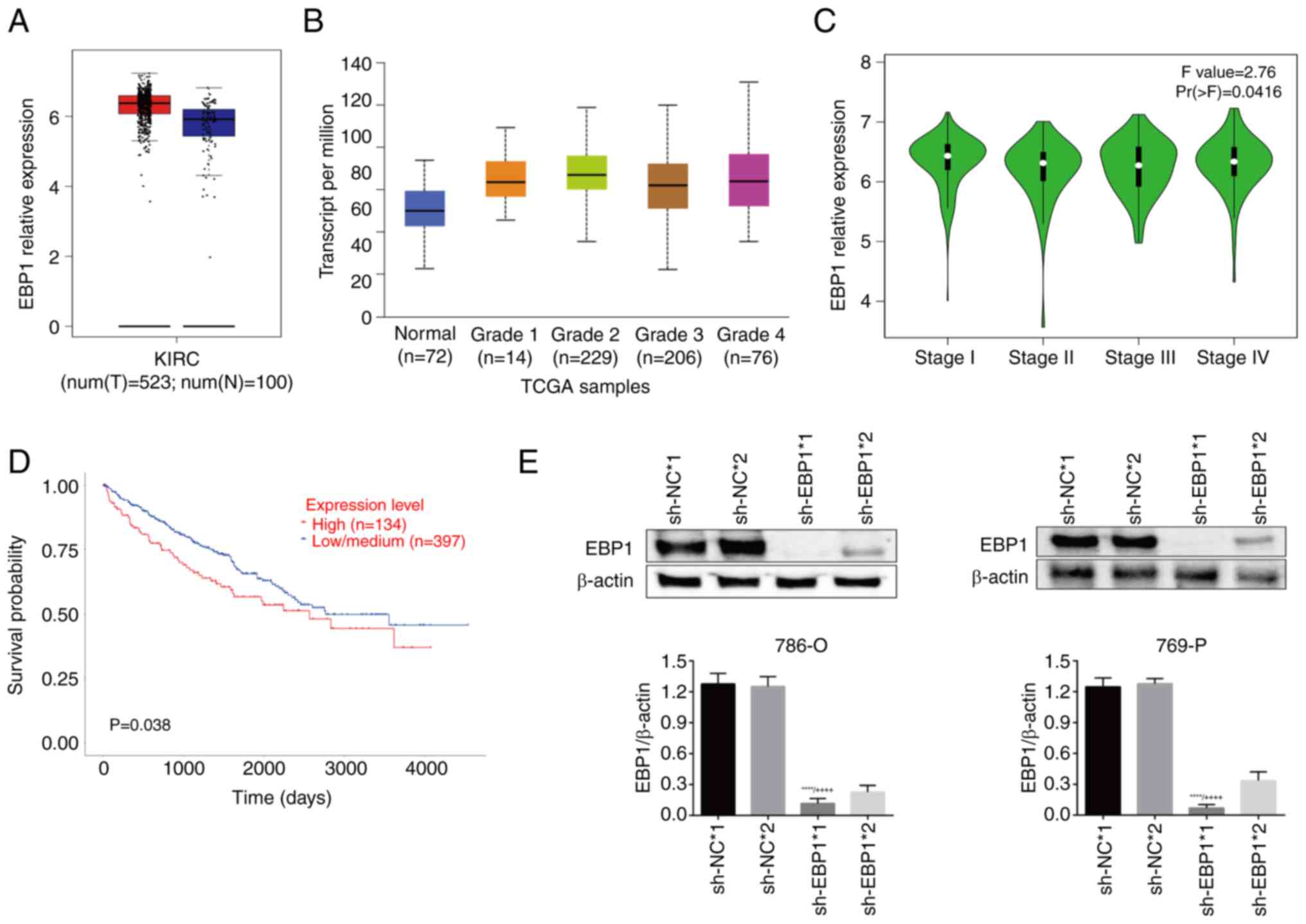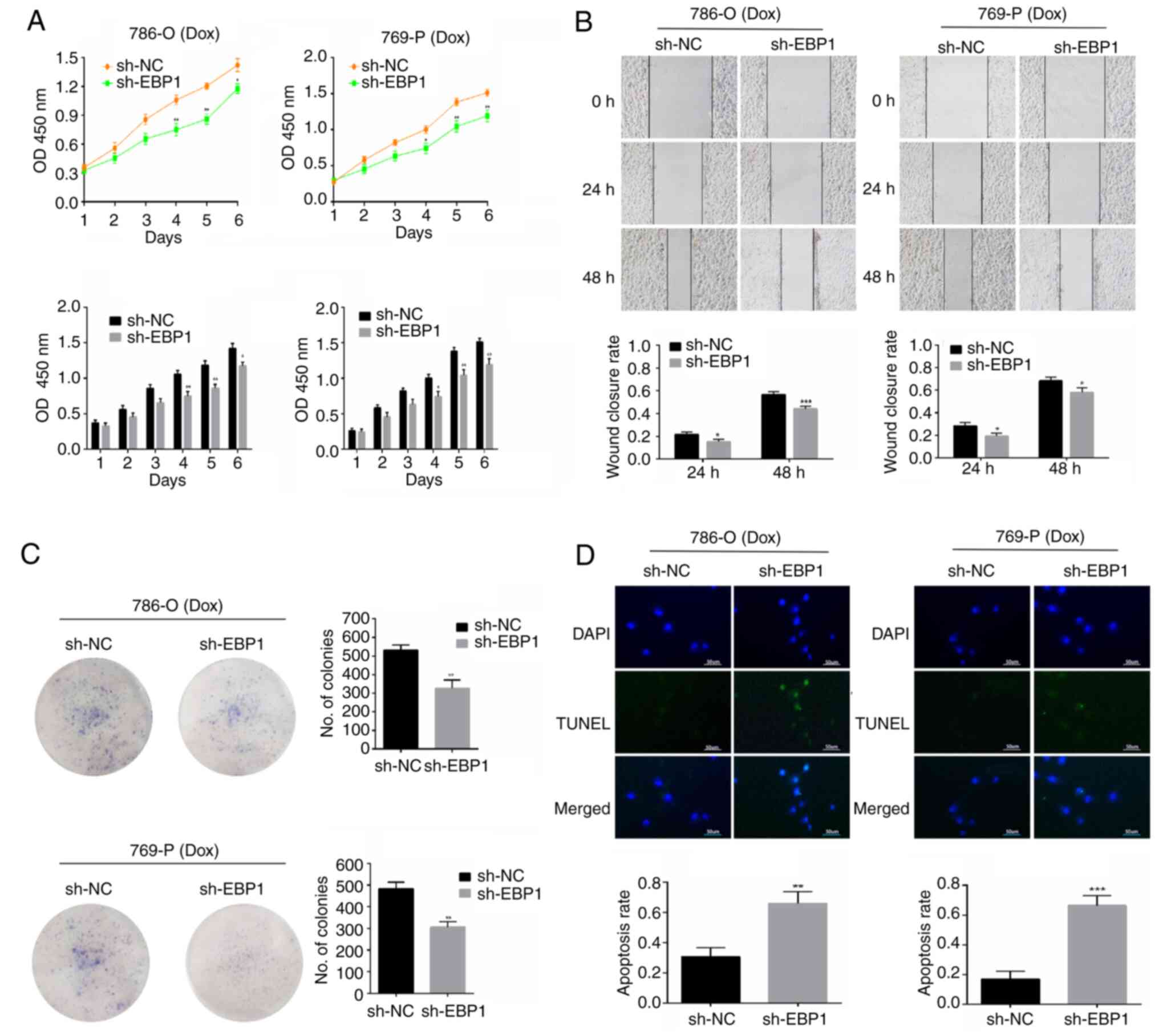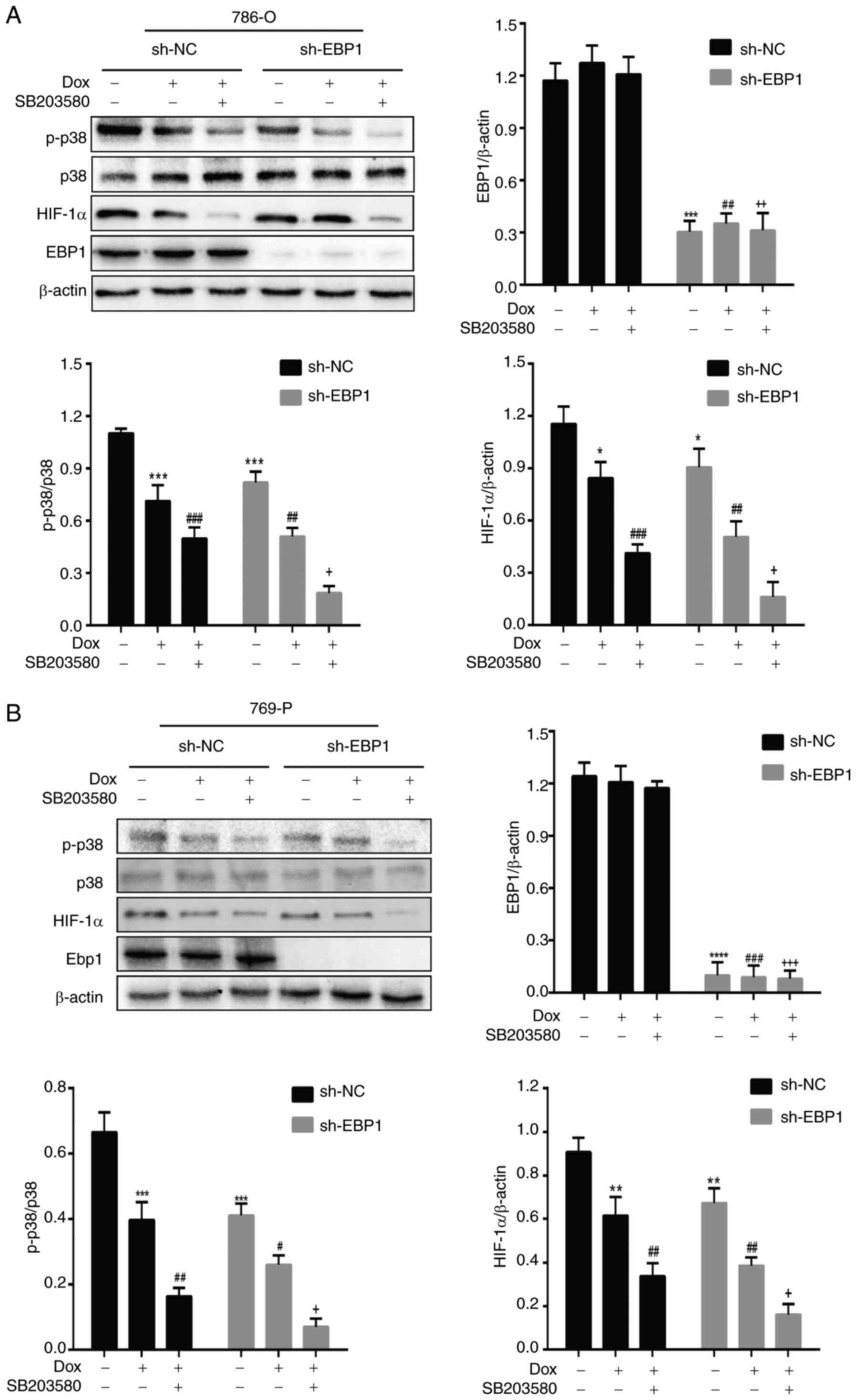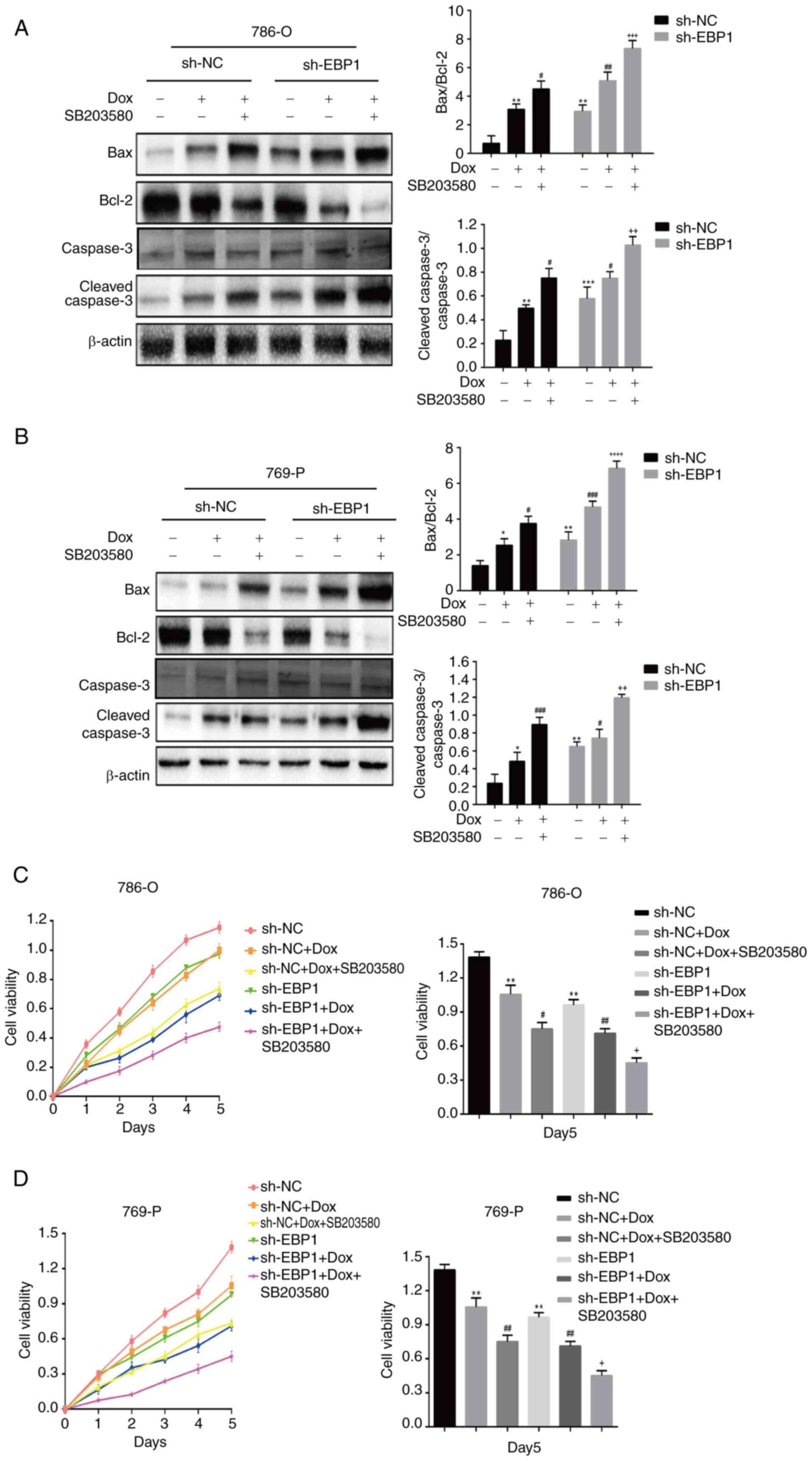|
1
|
Siegel RL, Giaquinto AN and Jemal A:
Cancer statistics, 2024. CA Cancer J Clin. 74:12–49. 2024.
View Article : Google Scholar : PubMed/NCBI
|
|
2
|
Hishida T, Masai K, Kaseda K, Asakura K
and Asamura H: Debulking surgery for malignant tumors: The current
status, evidence and future perspectives. Jpn J Clin Oncol.
51:1349–1362. 2021. View Article : Google Scholar : PubMed/NCBI
|
|
3
|
Olivares-Urbano MA, Griñán-Lisón C,
Marchal JA and Núñez MI: CSC Radioresistance: A therapeutic
challenge to improve radiotherapy effectiveness in Cancer. Cells.
9:16512020. View Article : Google Scholar : PubMed/NCBI
|
|
4
|
Kciuk M, Gielecińska A, Mujwar S, Kołat D,
Kałuzińska-Kołat Ż, Celik I and Kontek R: Doxorubicin-An Agent with
multiple mechanisms of anticancer activity. Cells. 12:6592023.
View Article : Google Scholar : PubMed/NCBI
|
|
5
|
Kong CY, Guo Z, Song P, Zhang X, Yuan YP,
Teng T, Yan L and Tang QZ: Underlying the mechanisms of
Doxorubicin-induced acute cardiotoxicity: Oxidative stress and cell
death. Int J Biol Sci. 18:760–770. 2022. View Article : Google Scholar : PubMed/NCBI
|
|
6
|
Wang Y, Xing J, Liang Y, Liang H, Liang N,
Li J, Yin G, Li X and Zhang K: The structure and function of
multifunctional protein ErbB3 binding protein 1 (Ebp1) and its role
in diseases. Cell Biol Int. 48:1069–1079. 2024. View Article : Google Scholar : PubMed/NCBI
|
|
7
|
Zhao Y, Xing C, Deng Y, Ye C and Peng H:
HIF-1α signaling: Essential roles in tumorigenesis and implications
in targeted therapies. Genes Dis. 11:234–251. 2024. View Article : Google Scholar : PubMed/NCBI
|
|
8
|
Rashid M, Zadeh LR, Baradaran B, Molavi O,
Ghesmati Z, Sabzichi M and Ramezani F: Up-down regulation of HIF-1α
in cancer progression. Gene. 798:1457962021. View Article : Google Scholar : PubMed/NCBI
|
|
9
|
Bao Y, Suvesh M, Li X, Bai X, Li H, Li X,
Xu D and Liu L: Ebp1 p48 promotes oncogenic properties in
hepatocellular carcinoma through p38 MAPK/HIF1α activation and p53
downregulation. Mol Carcinog. 60:252–264. 2021. View Article : Google Scholar : PubMed/NCBI
|
|
10
|
Meng H, Cao S, Tian S, Huo J, Li X, Xu D
and Liu L: EBP1 promotes the malignant biological behaviors of
kidney renal clear cell carcinoma through activation of p38/HIF-1α
signaling pathway. Cancer Cell Int. 24:2612024. View Article : Google Scholar : PubMed/NCBI
|
|
11
|
Kim EK and Choi EJ: Compromised MAPK
signaling in human diseases: An update. Arch Toxicol. 89:867–882.
2015. View Article : Google Scholar : PubMed/NCBI
|
|
12
|
Vergote I, Heitz F, Buderath P, Powell M,
Sehouli J, Lee CM, Hamilton A, Fiorica J, Moore KN, Teneriello M,
et al: A randomized, double-blind, placebo-controlled phase 1b/2
study of ralimetinib, a p38 MAPK inhibitor, plus gemcitabine and
carboplatin versus gemcitabine and carboplatin for women with
recurrent platinum-sensitive ovarian cancer. Gynecol Oncol.
156:23–31. 2020. View Article : Google Scholar : PubMed/NCBI
|
|
13
|
Grossi V, Peserico A, Tezil T and Simone
C: p38α MAPK pathway: A key factor in colorectal cancer therapy and
chemoresistance. World J Gastroenterol. 20:9744–9758. 2014.
View Article : Google Scholar : PubMed/NCBI
|
|
14
|
Sohail M, Sun Z, Li Y, Gu X and Xu H:
Research progress in strategies to improve the efficacy and safety
of doxorubicin for cancer chemotherapy. Expert Rev Anticancer Ther.
21:1385–1398. 2021. View Article : Google Scholar : PubMed/NCBI
|
|
15
|
Girigoswami A, Adhikesavan H, Mudenkattil
S, Devi S and Girigoswami K: Role of cerium oxide nanoparticles and
doxorubicin in improving cancer management: A mini review. Curr
Pharm Des. 29:2640–2654. 2023. View Article : Google Scholar : PubMed/NCBI
|
|
16
|
Gao L, Han H, Wang H, Cao L and Feng WH:
IL-10 knockdown with siRNA enhances the efficacy of Doxorubicin
chemotherapy in EBV-positive tumors by inducing lytic cycle via
PI3K/p38 MAPK/NF-kB pathway. Cancer Lett. 462:12–22. 2019.
View Article : Google Scholar : PubMed/NCBI
|
|
17
|
Ye Y, Ye F, Li X, Yang Q, Zhou J, Xu W,
Aschner M, Lu R and Miao S: 3,3′-diindolylmethane exerts
antiproliferation and apoptosis induction by TRAF2-p38 axis in
gastric cancer. Anticancer Drugs. 32:189–202. 2021. View Article : Google Scholar : PubMed/NCBI
|
|
18
|
Jones J, Otu H, Spentzos D, Kolia S, Inan
M, Beecken WD, Fellbaum C, Gu X, Joseph M, Pantuck AJ, et al: Gene
signatures of progression and metastasis in renal cell cancer. Clin
Cancer Res. 11:5730–5739. 2005. View Article : Google Scholar : PubMed/NCBI
|
|
19
|
Li W, Wang Z, Wang H, Zhang J, Wang X,
Xing S and Chen S: IQGAP3 in clear cell renal cell carcinoma
contributes to drug resistance and genome stability. PeerJ.
10:e142012022. View Article : Google Scholar : PubMed/NCBI
|
|
20
|
Wu XX, Kakehi Y, Mizutani Y, Nishiyama H,
Kamoto T, Megumi Y, Ito N and Ogawa O: Enhancement of
TRAIL/Apo2L-mediated apoptosis by adriamycin through inducing DR4
and DR5 in renal cell carcinoma cells. Int J Cancer. 104:409–417.
2003. View Article : Google Scholar : PubMed/NCBI
|
|
21
|
Soares LBM, Lima APB, Melo AS, Almeida TC,
de Medeiros Teixeira LF and da Silva GN: Additive effects of
resveratrol and doxorubicin on bladder cancer cells. Anticancer
Drugs. 33:e389–e397. 2022. View Article : Google Scholar : PubMed/NCBI
|
|
22
|
Ghelli Luserna Di Rorà A, Ghetti M, Ledda
L, Ferrari A, Bocconcelli M, Padella A, Napolitano R, Fontana MC,
Liverani C, Imbrogno E, et al: Exploring the ATR-CHK1 pathway in
the response of doxorubicin-induced DNA damages in acute
lymphoblastic leukemia cells. Cell Biol Toxicol. 39:795–811. 2023.
View Article : Google Scholar : PubMed/NCBI
|
|
23
|
Ma Z, Guo D, Wang Q, Liu P, Xiao Y, Wu P,
Wang Y, Chen B, Liu Z and Liu Q: Lgr5-mediated p53 repression
through PDCD5 leads to doxorubicin resistance in hepatocellular
carcinoma. Theranostics. 9:2967–2983. 2019. View Article : Google Scholar : PubMed/NCBI
|
|
24
|
Babichev Y, Kabaroff L, Datti A, Uehling
D, Isaac M, Al-Awar R, Prakesch M, Sun RX, Boutros PC, Venier R, et
al: PI3K/AKT/mTOR inhibition in combination with doxorubicin is an
effective therapy for leiomyosarcoma. J Transl Med. 14:672016.
View Article : Google Scholar : PubMed/NCBI
|
|
25
|
Liang Y, Wang Y, Zhang Y, Ye F, Luo D, Li
Y, Jin Y, Han D, Wang Z, Chen B, et al: HSPB1 facilitates
chemoresistance through inhibiting ferroptotic cancer cell death
and regulating NF-κB signaling pathway in breast cancer. Cell Death
Dis. 14:4342023. View Article : Google Scholar : PubMed/NCBI
|
|
26
|
Du G, Lin H, Wang M, Zhang S, Wu X, Lu L,
Ji L and Yu L: Quercetin greatly improved therapeutic index of
doxorubicin against 4T1 breast cancer by its opposing effects on
HIF-1α in tumor and normal cells. Cancer Chemother Pharmacol.
65:277–287. 2010. View Article : Google Scholar : PubMed/NCBI
|
|
27
|
Qin T, Cui XY, Xiu H, Huang C, Sun ZN, Xu
XM, Li LH and Yue L: USP37 downregulation elevates the chemical
sensitivity of human breast cancer cells to adriamycin. Int J Med
Sci. 18:325–334. 2021. View Article : Google Scholar : PubMed/NCBI
|
|
28
|
Yan H, Zhao RM, Wang ZJ, Zhao FR and Wang
SL: Knockdown of PRAME enhances adriamycin-induced apoptosis in
chronic myeloid leukemia cells. Eur Rev Med Pharmacol Sci.
19:4827–4834. 2015.PubMed/NCBI
|
|
29
|
Liu Z, Ahn JY, Liu X and Ye K: Ebp1
isoforms distinctively regulate cell survival and differentiation.
Proc Natl Acad Sci USA. 103:10917–10922. 2006. View Article : Google Scholar : PubMed/NCBI
|
|
30
|
Liu H, Li Z, Li L, Peng H and Zhang Z:
EBP1 suppresses growth, migration, and invasion of thyroid cancer
cells through upregulating RASAL expression. Tumour Biol.
36:8325–8331. 2015. View Article : Google Scholar : PubMed/NCBI
|
|
31
|
Bao Y, Cui J, Yue Y, Cao S, Li X and Liu
L: ERBB3 binding protein 1 promotes the progression of malignant
melanoma through activation of the Wnt/ β-catenin signaling
pathway. Cancer Cell Int. 22:442022. View Article : Google Scholar : PubMed/NCBI
|
|
32
|
Nguyen DQ, Hoang DH, Nguyen TTV, Ho HD,
Huynh V, Shin JH, Ly QT, Thi Nguyen DD, Ghoda L, Marcucci G and
Nguyen LXT: Ebp1 p48 promotes oncogenic activities in human colon
cancer cells through regulation of TIF-90-mediated ribosomal RNA
synthesis. J Cell Physiol. 234:17612–17621. 2019. View Article : Google Scholar : PubMed/NCBI
|
|
33
|
Coulthard LR, White DE, Jones DL,
McDermott MF and Burchill SA: p38(MAPK): Stress responses from
molecular mechanisms to therapeutics. Trends Mol Med. 15:369–379.
2009. View Article : Google Scholar : PubMed/NCBI
|
|
34
|
Esposito G, Gigli S, Seguella L, Nobile N,
D'Alessandro A, Pesce M, Capoccia E, Steardo L, Cirillo C, Cuomo R
and Sarnelli G: Rifaximin, a non-absorbable antibiotic, inhibits
the release of pro-angiogenic mediators in colon cancer cells
through a pregnane X receptor-dependent pathway. Int J Oncol.
49:639–645. 2016. View Article : Google Scholar : PubMed/NCBI
|
|
35
|
Koodie L, Ramakrishnan S and Roy S:
Morphine suppresses tumor angiogenesis through a HIF-1alpha/p38MAPK
pathway. Am J Pathol. 177:984–997. 2010. View Article : Google Scholar : PubMed/NCBI
|
|
36
|
Tan W, Yu HG and Luo HS: Inhibition of the
p38 MAPK pathway sensitizes human gastric cells to doxorubicin
treatment in vitro and in vivo. Mol Med Rep.
10:3275–3281. 2014. View Article : Google Scholar : PubMed/NCBI
|
|
37
|
Ye J, Wang Y, Xu Y, Wang Z, Liu L, Wang M,
Ye D, Zhang J, Yang Z, Lin Y, et al: Retraction notice to
‘Interleukin-22 deficiency alleviates doxorubicin-induced oxidative
stress and cardiac injury via the p38 MAPK/macrophage/Fizz3 axis in
mice’ [Redox Biol. 36 (2020) 101636]. Redox Biol. 36:1016362020.
View Article : Google Scholar : PubMed/NCBI
|














